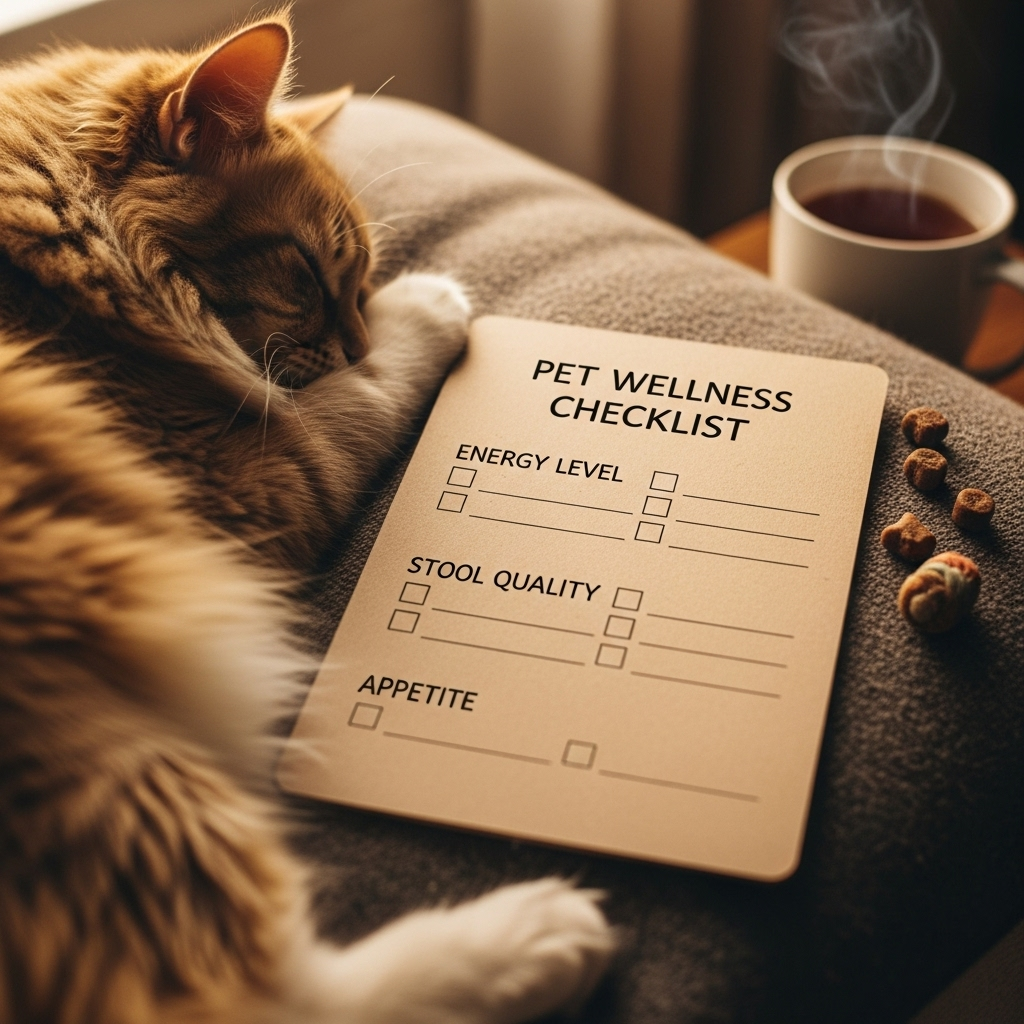9 Signs Your Pet’s Probiotics Are Working

If you recently started your dog, cat, or other pet on a probiotic supplement, you’re probably watching closely for improvements.
Probiotics can support digestive balance, immune health, and overall well-being, but results vary by animal, product, and condition.
This guide explains common signs that probiotics are doing their job, how soon you might see changes, what affects results, and when to contact your veterinarian.
How probiotics work in pets — a quick overview
Probiotics are live microorganisms (often strains of Lactobacillus, Bifidobacterium, Enterococcus, or Saccharomyces boulardii) that can help restore and support the gut microbiome.
In pets, they may:
- Promote healthy digestion and regular stool formation
- Reduce harmful bacteria overgrowth after stress or antibiotics
- Support immune function and reduce inflammation in the gut
- Improve nutrient absorption and, in some pets, skin and coat condition
Timeline: when to expect changes
Results depend on the reason you’re using probiotics and the product used.
Some changes (less gas or milder diarrhea) can appear in 24–72 hours; more meaningful shifts in stool quality, appetite, energy, and coat may take 2–8 weeks.
If there’s no improvement after 4–6 weeks, or if symptoms worsen, consult your veterinarian.
9 signs your pet’s probiotics are working
Watch for a combination of these signs rather than expecting every single one. Improvements are often gradual and subtle.
1. More consistent stools
A key indicator: stool that is firmer and holds shape more consistently. If your pet’s stools shift from loose or watery to formed and regular, that’s a good sign the gut flora balance is improving.
2. Less diarrhea or fewer bouts of soft stool
Probiotics often reduce the frequency or severity of diarrhea, especially when given for antibiotic-associated diarrhea, dietary changes, or mild infections.
Note: persistent or bloody diarrhea still needs immediate veterinary attention.
3. Reduced gas and belly noises
Excessive gas, bloating, or loud gut sounds (borborygmi) may decrease as beneficial bacteria outcompete gas-producing microbes.
Improved digestion can lead to a quieter, more comfortable belly.
4. Better appetite and stable weight
Pets recovering from GI upset often regain appetite. If your pet eats consistently and maintains or regains healthy weight, the digestive and nutrient-absorption improvements may be helping.
5. More energy and normal behavior
A pet feeling less uncomfortable will often act more like themselves—playful, alert, and active. Improved nutrient uptake can also boost energy over time.
6. Fewer GI-related accidents in the house
For pets with chronic loose stools or urgency, fewer indoor accidents are a practical sign of improvement in bowel control and stool consistency.
7. Reduced stool odor
A notable drop in fecal odor can indicate a healthier microbial balance and decreased production of foul-smelling compounds.
8. Improved skin, coat, or allergy signs (longer-term)
Some pets show clearer skin, less itching, or a shinier coat after weeks of probiotic use as gut health and immune regulation improve. This is more variable and often slower to appear.
9. Fewer infections or quicker recovery from antibiotic treatment
Pets given probiotics alongside or after antibiotics may experience fewer secondary GI problems and recover normal gut function sooner. Look for a quicker return to baseline after antibiotic courses.
What affects whether probiotics work
- Strain and formulation: Different strains have different benefits. Products designed for pets are preferred.
- Dose and CFUs: Adequate colony-forming units and proper dosing matter; more isn’t always better.
- Storage and handling: Some probiotics need refrigeration to remain effective.
- Underlying health issues: Chronic disease, pancreatic insufficiency, or severe infections may limit probiotic benefit without additional treatment.
- Concurrent medications: Antibiotics can reduce probiotic strains unless timed and selected appropriately.
Practical tips to get the best results
- Use a veterinary-recommended product formulated for your species and life stage.
- Follow the manufacturer’s or vet’s dose and complete the recommended course.
- Give probiotics with food unless the label directs otherwise—food can buffer stomach acid and improve survival of organisms.
- Store as instructed (some need refrigeration).
- Keep a short diary of stool quality, appetite, and energy to track changes over weeks.
Pros and Cons
| Pros | Cons |
|---|---|
|
– May improve stool consistency and reduce diarrhea – Can support immune and digestive health – Generally safe with few side effects |
– Results vary by strain, dose, and pet – Potential short-term gas or mild GI upset in some pets – Quality and storage issues affect effectiveness |
When to call your veterinarian
Contact your vet right away if your pet has severe or bloody diarrhea, persistent vomiting, lethargy, dehydration, or a sudden decline in condition.
Also consult your vet if there’s no improvement after several weeks, or if your pet has immune compromise or other chronic illnesses—probiotics may need to be chosen or dosed differently.
FAQ
Can probiotics make my pet worse before they get better?
Some pets may have mild, short-lived gas or a slight change in stool when first starting probiotics. If symptoms are severe or persist beyond a few days, stop the supplement and consult your vet.
How long until I should see clear improvement?
Mild improvements can appear within a few days; reliable changes in stool and overall health usually take 2–8 weeks depending on the issue and product.
Are human probiotics safe for pets?
Some human probiotic strains can be used in pets, but products formulated and tested for animals are preferable. Always check with your veterinarian before using a human product.
Should I give probiotics while my pet is on antibiotics?
Often yes—many vets recommend giving probiotics during and after antibiotic courses to reduce antibiotic-associated diarrhea. Timing and strain selection matter; ask your vet for guidance.
Key takeaways
- Look for gradual improvements in stool consistency, reduced diarrhea, and decreased gas as primary signs.
- Some benefits appear within days; fuller effects usually take several weeks.
- Product strain, quality, dose, storage, and the pet’s health all influence results.
- Consult your veterinarian for severe symptoms, no improvement, or for tailored probiotic choices.
Disclaimer
This information is educational and not a substitute for professional veterinary care. Probiotics can help many pets, but they are not appropriate for every condition.
If your pet shows severe or persistent symptoms, or if you have questions about which probiotic to use, please consult your veterinarian for personalized advice.

Leave a Reply